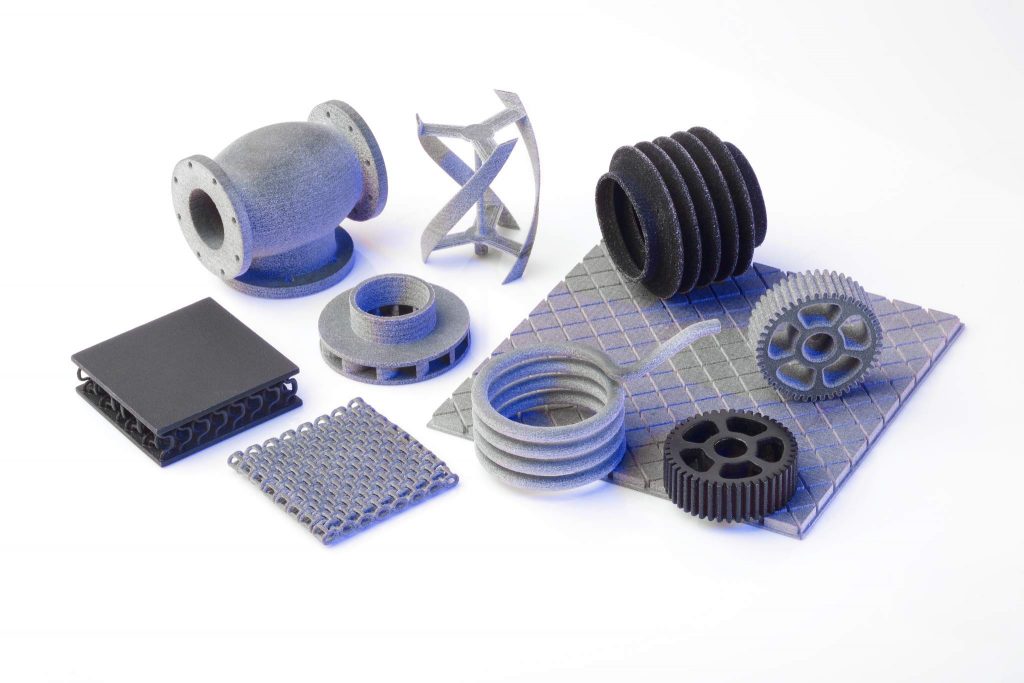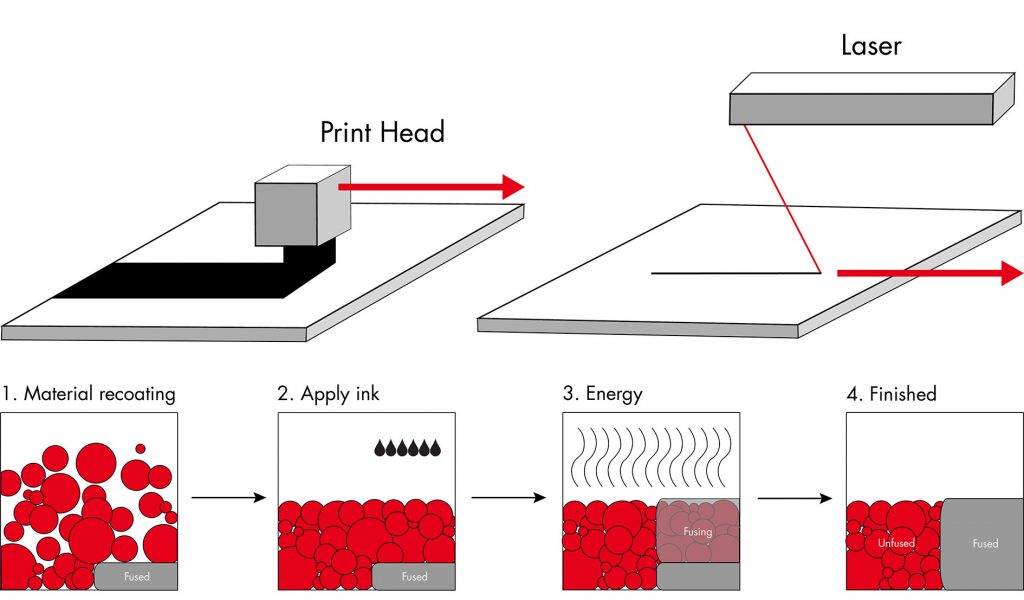On schedule with rumors from 2016, voxeljet, a German provider of large-format 3D printers and end-user solutions, is set to release its first High Speed Sintering (HSS) 3D printer.
According to Christian Traeger, Director of Sales & Marketing at voxeljet, the potential scalability of the process makes HSS “even more productive compared to other additive manufacturing processes.”

Invention of HSS
The HSS process was invented by Neil Hopkinson at the University of Loughborough in the early 2000s. Following this, Hopkinson moved to the University of Sheffield to continue development of the process, and he is now leader of the Xaar 3D printing center in Nottingham, UK, where he and his teams have been seeking commercialization.
One of the partners found in this time is voxeljet. Aerospace manufacturer BAE Systems, and consumer goods company Unilever, have also been working with the technology, alongside other partners in materials and academia.
MJF, SLS and injection molding comparable parts
At voxeljet, HSS leverages the firm’s core binder jetting technology. Instead of jetting a binder onto the base material, HSS jets an infrared reactive ink that is polymerized by a sweeping print arm.
A HSS machine in action. Clip via: Sheffield Engineering on YouTube
The finished HSS parts have similar surface quality and properties to parts produced using Multi Jet Fusion (MJF), Selective Laser Sintering (SLS) and injection molding.
One advantage of the process when compared to SLS however is the size of the print head. Traeger explains, “Due to large printing widths of our print heads, we see a high potential for increased printing rates on larger platforms in the future, making this process even more productive compared to other additive manufacturing processes.”

Open source materials platform
voxeljet’s HSS technology will be initially launched in the VX2000 platform. In a trend sweeping the industry, the machine will be released with an open materials platform, encouraging elastomer and polymeric innovation by customers and research institutions.
Dr. Ingo Ederer, voxeljet CEO comments, “…we are excited to offer to our customers great flexibility regarding process and machine parameters, as both can be tailored by our customers to their specific needs.”
“We offer the option of open sourcing for materials, as our customers can choose various testing and validation services from voxeljet.”
He adds that ProPrint, a new, modular 3D printing software, is “available in a full access development-kit, allowing for even greater customization options.”
At formnext 2017
The VX200 platform is scheduled for launch at formnext 2017 in Frankfurt. Following the theme of this year’s expo, the VX200 platform focuses on 3D printing for end-use applications, e.g. spare parts for the automotive industry, support brackets for industrial equipment, and consumer goods.
Depending upon part size and parameters, HSS is capable of producing up to 100,000 individual parts per day. According to Traeger, “voxeljet’s industrial printers enable high-quality print resolutions with layer times that are consistent no matter what is being printed.”
3D Printing Industry will be reporting live at formnext from 14 – 17 November 2017. Be sure to sign up to our newsletter, and find us on Facebook/Twitter, to stay up to date on voxeljet’s progress.
All of the latest 3D printing events near you can be found here.
Featured image: High Speed Sintering (HSS) 3D printed parts. Photo via voxeljet



